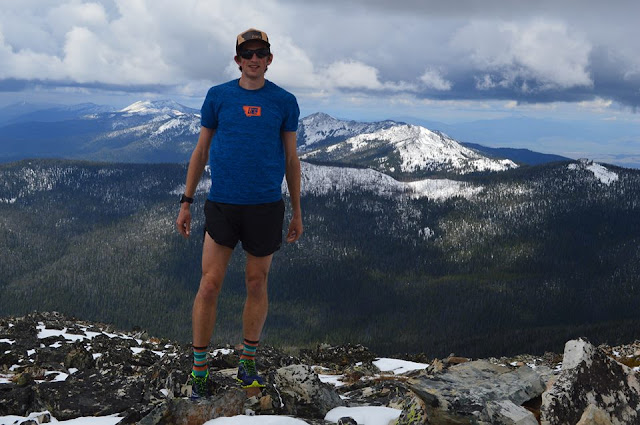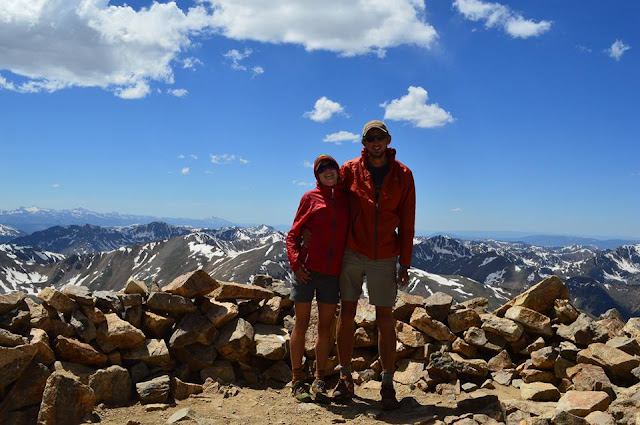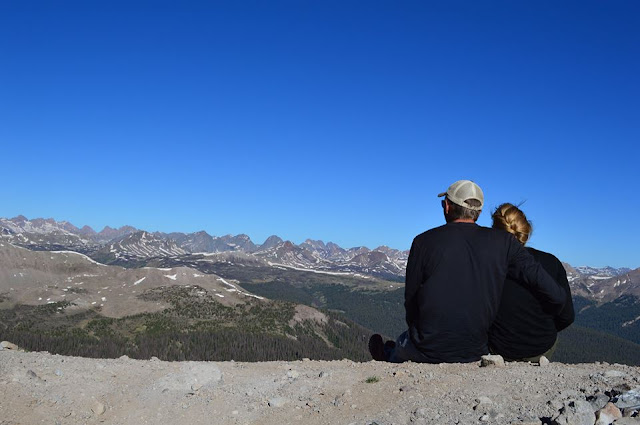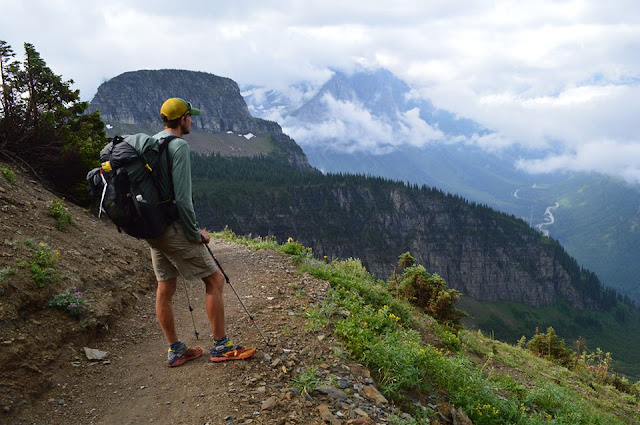 |
| On top of Ch-Paa-Qn. The highest point in the Reservation Divide. Photo: Forrest |
Forrest Boughner moved to Montana almost two years ago from Flagstaff. Since then he has established himself as one of the fastest trail runners in Montana recently winning the Bitterroot 10 miler and placing 2nd at Pengelly Double Dip. Forrest also has had success outside of Montana. He placed top American at the 2011 Mercedes 1/2 Marathon in Birmingham, AL, 8th place in the US Snowshoe National Championships in both 2015 and 2016 and placed 5th in the 2015 US Sky Running Series for the Sky Distance. Aside from running, Forrest works full time at Runners Edge and leads trail running classes a few times per week. When he moved to Montana, Forrest created the Montana Mountain Project to learn the history and topography of the Treasure State. Discover more about Forrest in this MTC interview.
 |
| On top of 14,433′ Mt Elbert. The highest point on the Continental Divide in the US. Photo: Jack DaSilva |
Describe the Montana Mountain Project and what inspires you to continue?
After growing up in Arizona I know a lot about the geography, culture, and biodiversity of Arizona, but not much about Montana. I started formulating the idea of a Mountain Project to help push the boundaries of where I explore and discover what Montana is all about. According to Montana.gov there are 64 mountain ranges in Montana. I am going to summit the highest point in each range between January 1st 2016 and December 31st 2020. For every mountain I try to find some interesting story, nugget of history, or unique tidbit that pertains to each range to enhance my outdoor experience and then share that experience on my blog. I started this project January 1stso I have not needed too much additional inspiration to continue yet, but I do get more excited when I talk to people who have been in various ranges that we don’t hear much about in Missoula, like the Sweetgrass Hills, or the Crazy Mountains, and they share tales of a fun escapade or specific route. It’s already been a great experience as a way to listen to stories from others about their experiences in different ranges. |
| Looking down on John Fiore as we attempt to summit McDonald Peak in the Missions. We were forced to turn back 200 feet from the summit. |
I’m a sucker for anything above treeline and continuous ridgelines, so ranges that offer that, like the Pintlers, Tobacco Roots, and Missions, get me excited. But I am also excited to explore ranges that I have seen often, but not been in like the Highland Mountains, Rubies, and Coeur d’Alenes.
 |
| On the top of East Saint Mary’s with Sara in the Missions |
This is a tough question for me since I usually prefer to explore a new place to running a previously traveled route. That being said, my all time favorite would be a section of the Continental Divide Trail just outside of Silverton, CO. It stays on ridgelines above 12,000′ for days, and you can piece together various cross-country loops to run various peaks.
In Montana my favorite thus far is probably the trail/route to Snowshoe Peak in the Cabinet Range from the North Fork of the Bull River. Down low it feels like a rainforest, but pops out onto an incredibly blue lake before climbing up some scree and boulder fields. You get a little bit of everything special on that route without seeing a single person.
Describe a perfect day for you.In Montana my favorite thus far is probably the trail/route to Snowshoe Peak in the Cabinet Range from the North Fork of the Bull River. Down low it feels like a rainforest, but pops out onto an incredibly blue lake before climbing up some scree and boulder fields. You get a little bit of everything special on that route without seeing a single person.
The most satisfying days for me are those that Sara and I are out of the house before first light and on a trail as the sun rises. Whether we’re running or hiking, that usually means we’re heading up somewhere high. That perfect day would then involve a cheese and salami lunch, some ridgeline travel, and a fun technical descent. No perfect day is complete without ice cream to finish it off.
 |
| The start of a perfect day. At 12,600′ on the Continental Divide in ‘The Window’ near Silverton, CO. |
I think that runners often get portrayed as not caring about nature as much because we are “moving too fast to see anything” or “scaring wildlife,” so I think a big part of what I try to communicate is that running is another way to appreciate nature. It is a very different experience than hiking, but also a way to feel connected with nature.
I think the biggest potential for the role of preservation within trail running, and mountain running in particular, is that people are able to understand through pictures and stories where legs can take you. And with more people heading out in the mountains, more images come back that inspire recreation, and preservation. Mike Foote and Mike Wolf’s Crown Traverse serves as an excellent example of what runners can do to draw attention to the beauty of protected areas, and demonstrates what runners (very talented runners) are capable of. Every adventure like the Crown Traverse, or Jimmy Grant’s Wilderness Project, help bring awareness of special, remote protected places in Montana right to someone’s facebook and instagram feeds, which, for better or worse, is where to reach a majority of people.
I think the biggest potential for the role of preservation within trail running, and mountain running in particular, is that people are able to understand through pictures and stories where legs can take you. And with more people heading out in the mountains, more images come back that inspire recreation, and preservation. Mike Foote and Mike Wolf’s Crown Traverse serves as an excellent example of what runners can do to draw attention to the beauty of protected areas, and demonstrates what runners (very talented runners) are capable of. Every adventure like the Crown Traverse, or Jimmy Grant’s Wilderness Project, help bring awareness of special, remote protected places in Montana right to someone’s facebook and instagram feeds, which, for better or worse, is where to reach a majority of people.
 |
| One of our first trips exploring Montana. In Glacier NP. Photo: Sara Boughner |
My knowledge base of the Montana area will be greater, but as far as actually changing who I am is difficult to say. I hope that I become more understanding of various cultures around Montana, and can develop a stronger connection to the geography in this state.
What inspires you? I draw a lot of inspiration for running and exploring from the people around me. It helps working at Runner’s Edge because I get to listen to runners all day, but listening to people talk about running, and hear how hard they are working, gets me out the door. It’s also a great way to hear about new trails and mountains to explore.
If you could only speak one word today, what word would that be? “up” (apparently it’s the most versatile two-letter word)
 |
| With Micah Drew on the top of Butte Cabin Ridge, the highest point in the John Longs, and unfortunately named because it is very much a peak, not “just a ridge.” |
I’d spend half my time exploring various mountains and trails, and the other half of my time helping others discover the desire to get outdoors as well through various camps, clinics, writings, pictures, etc.
 |
| Looking down from the ridge to Hunchback Mountain outside Silverton, CO. |
Nicole
 missoulamarathon.org >>
missoulamarathon.org >>